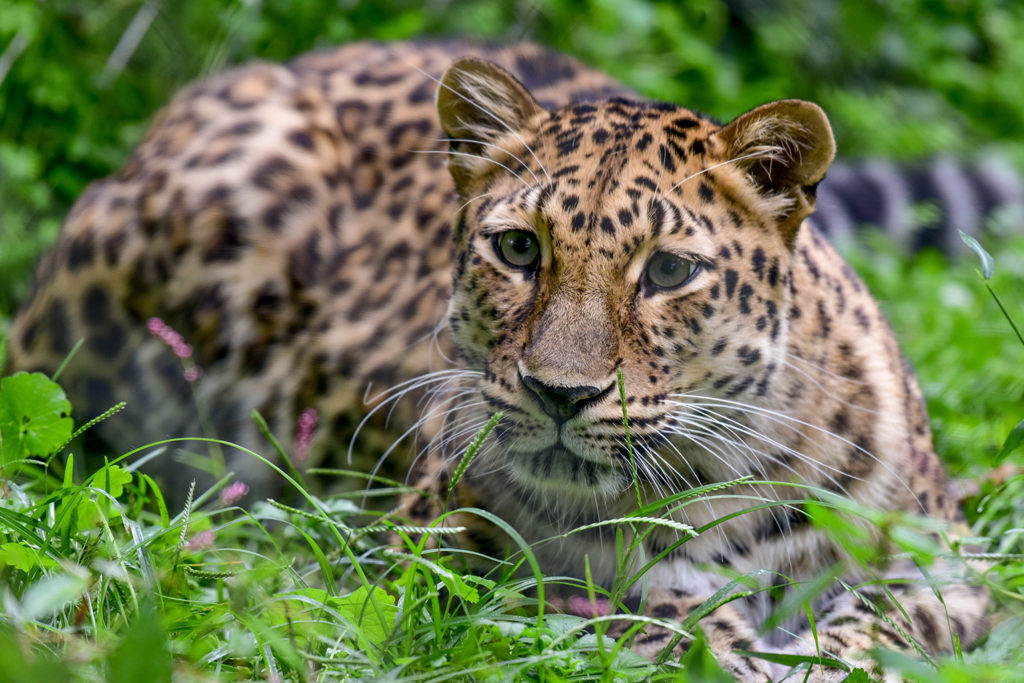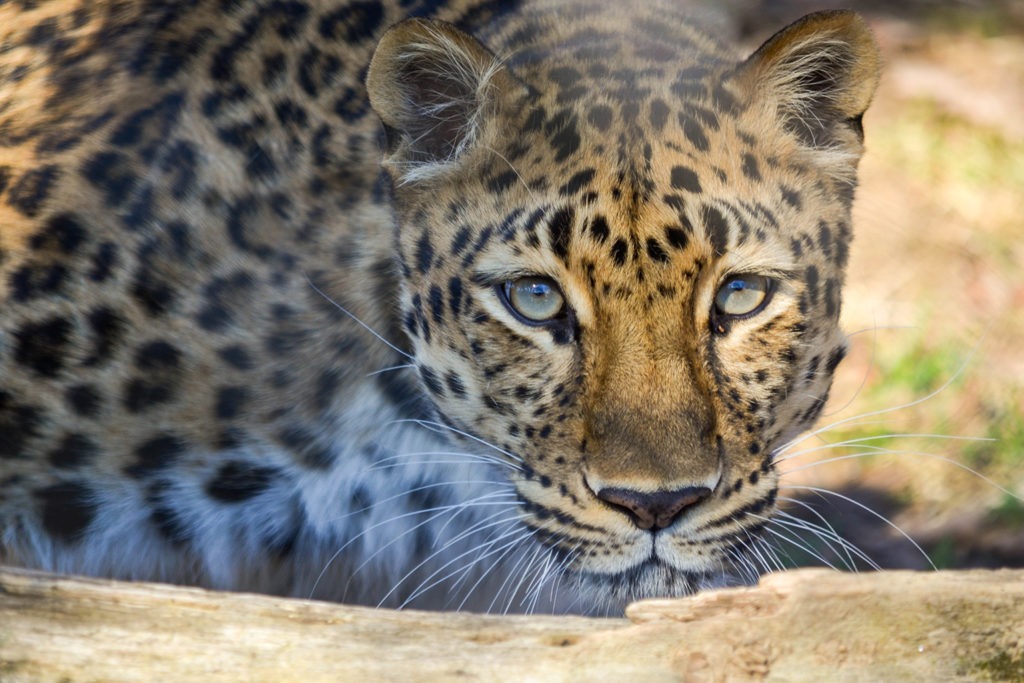Overview
“Where I live”
Leopards live in more diverse habitats than any other mammal except man and some rodents. While there is only one species of leopard, there are nine sub-species spread across Africa and Asia. Leopards are found in most of sub-Saharan Africa, eastward to the Arabian peninsula, and throughout southwest Asia to India, China, and Russia’s Far East. The northernmost subspecies is the Amur leopard, and it is the rarest cat in the world.
The Maryland Zoo is home to one female Amur leopard.
“How I live there”
Leopards have adapted to tropical forest, grasslands, steppe, rugged mountains, and desert. These cats exploit any environment well and are opportunistic hunters that will eat just about anything. This includes birds, snakes, rodents, small mammals, antelope, wild sheep, goats, and livestock.
By day, a leopard rests, often draped in the branches of a tree. Its spotted coat blends seamlessly into the dappled shade of a tree, giving it the uncanny ability to hide in plain sight.
Around twilight, a leopard awakens and begins to hunt or patrol its territory, scent-marking as it goes. Adult males call to advertise their territories – a hard, grunting, barking call that is easily recognized. They want to be sure that other leopards do not trespass. Adult females call when in estrous and ready to mate.
Leopards hunt by ambush. They watch silently for prey, get within feet of their chosen kill, and then charge. Only one in ten leopard attacks ends in success, though. The leopard is built for strength, not speed, so it relies on the elements of surprise and confusion to bring down prey. If a leopard makes a kill, it will gut the animal on the spot but then drag the carcass into the treetops to conceal and guard it from other predators.
“Making my mark”
As predators at the top of the food chain, leopards impact any ecosystem that they occupy. Within their respective territories, they also make their mark quite literally, in many ways, to announce themselves to fellow leopards. A leopard will visit favorite scratching trees within its territory. It will jump up onto a scratching branch, stretch, sniff first for existing scent marks, and then scratch with its front and back paws and maybe rub its chest along the branch. It’s a way of saying to other leopards “I own this territory.” Both males and females also urine spray to mark territory.
“What eats me”
Depending on the habitat type, leopards must compete with other large predators, including lions in Africa and tigers in Asia. Wherever they go, leopards also are persecuted by people who may poach them illegally or kill them in defense of livestock or because of the perceived danger that they represent.
Raising Young
Female leopards give birth to two or three cubs per litter. Usually, only 1 or 2 cubs survive to independence. For the first few months, the cubs are completely helpless and their mother keeps them well hidden. They will continue to nurse until they are about 3 months old but will also start to eat solid food at about 2 months. Gradually, through play and by copying their mother, cubs learn to hunt and kill. By their first birthday, cubs are almost full grown and are able to fend for themselves. They will separate from their mother within their second year and pursue a solitary life, although there have been reported cases of mother leopards maintaining affectionate bonds with her cubs well into their adulthoods.
Conservation
The leopard’s conservation status varies by habitat and by sub-species. The Amur leopard is listed by the IUCN, the world’s leading conservation organization, as critically endangered while the African leopard is classified as near threatened. Habitat loss, poaching, and persecution pose the greatest threats to this magnificent cat.
Taxonomy
- Kingdom: Animalia
- Phylum: Chordata
- Subphylum: Vertebrata
- Class: Mammalia
- Order: Carnivora
- Family: Felidae
- Genera: Panthera
- Species: pardus



